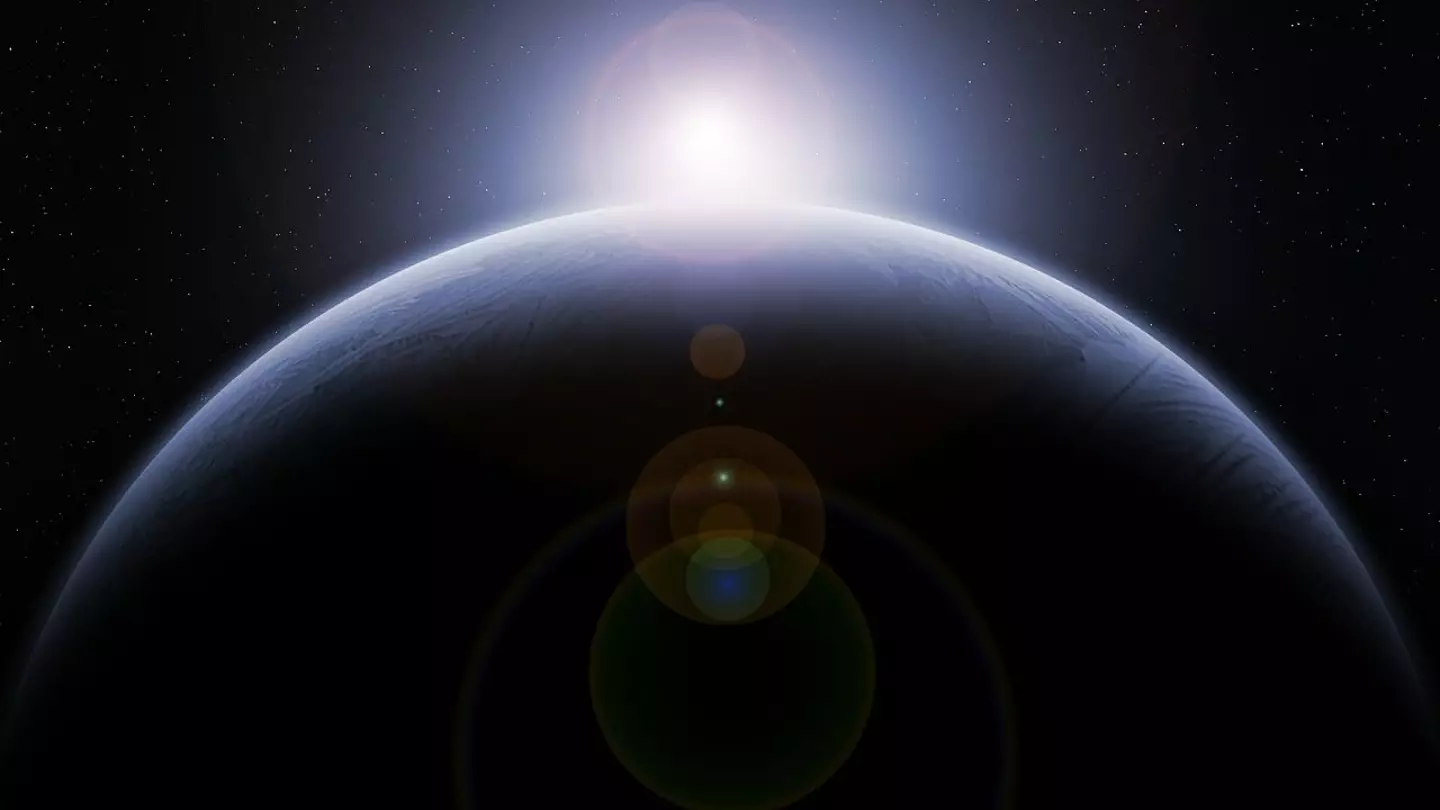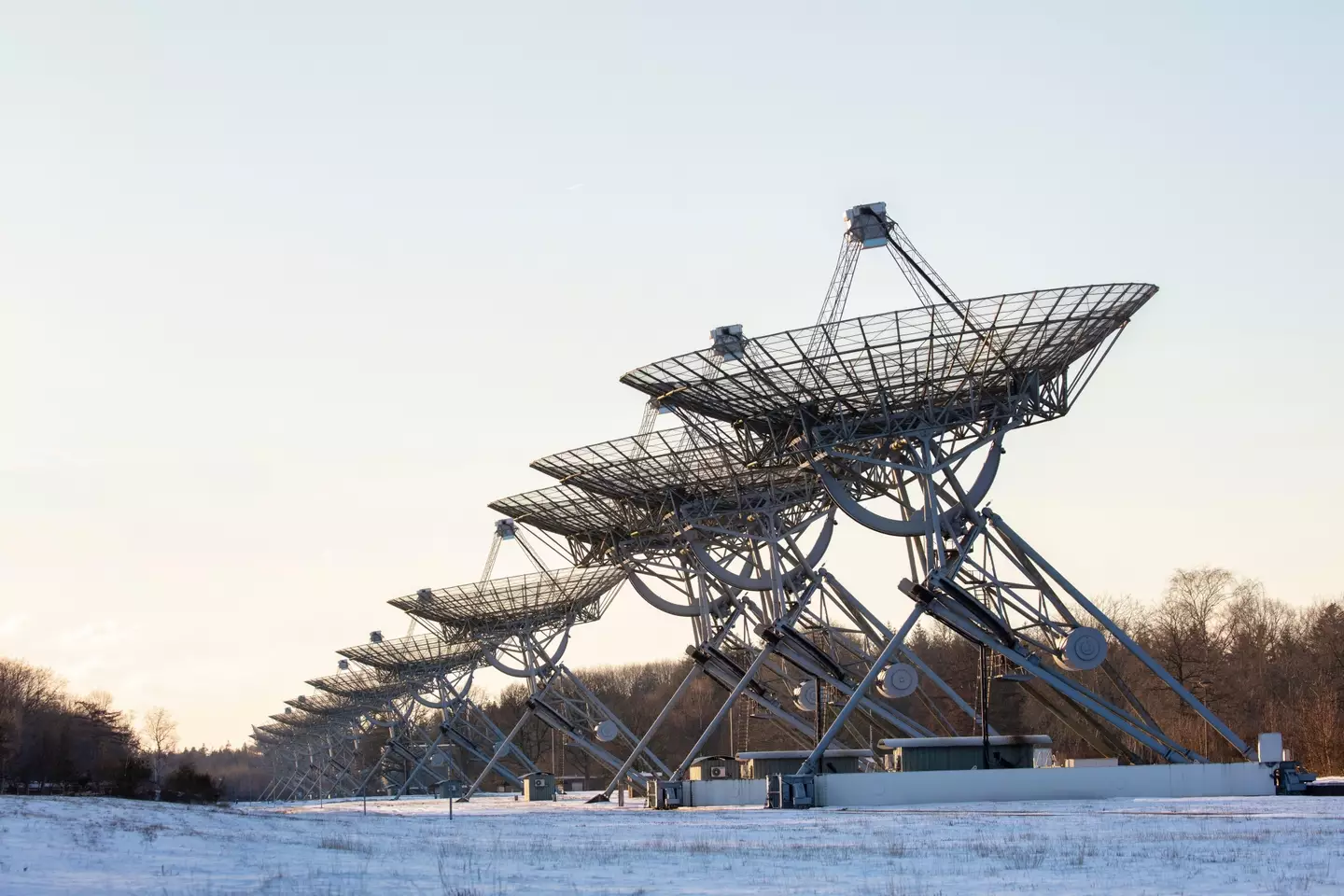
Topics: Space, Aliens, Science, Technology

Topics: Space, Aliens, Science, Technology
Scientists think that aliens from 4 billion light years away could be trying to contact the Earth via fast radio bursts (FRBs).
For decades, humans have been divided on whether alien life truly exists. However, according to newly-released research, cosmic lifeforms may have been recently trying to contact the Earth.
Joeri van Leeuwen at the University of Amsterdam has led an international team of astronomers and has published a paper in the journal Astronomy & Astrophysics.
In the paper, Professor van Leeuwen and co. recorded five FRBs which were discovered in 2019.
Advert
The FRBs were uncovered when the Westerbork Synthesis Radio Telescope in the Netherlands was upgraded.
Westerbork contains 14 25-metre dishes and is fitted with a supercomputer called the Apertif Radio Transient System (ARTS).
The newly-published study reads: “Only through the very high time and frequency resolution of ARTS are these hard-to-find FRBs detected, producing an unbiased view of the intrinsic population properties."

Advert
In regard to the upgrades to the Westerbork, Eric Kooistra at the Netherlands Institute for Radio Astronomy said: “One cannot just go but the complex electronics you need for this.
“We designed most of the system ourselves, with a large team. That resulted in a state-of-the-art machine, one of the most powerful in the world."
Following the upgrade, the Westerbork has been able to pick up FRBs as well as pinpoint the exact locations of the frequencies.
The result has been that over a five-week period in 2019, astronomers found five FRBs. These had travelled roughly 4 billion light years through space.
Advert
However, on their way to Earth, three of the five pierced the Triangulum Galaxy. This is a spiral galaxy that is roughly 2.73 million light years from our planet.

After heading through the Triangulum Galaxy, the FRBs intersected the Andromeda Galaxy before hitting 'the halos' of our Milky Way.
Each of the FRBs appeared randomly and could originate from black holes, neutron stars or even artificial signals created by intelligent beings (aka aliens).
Advert
In 2017 researchers at the Harvard-Smithsonian Center for Astrophysics said FRBs could be coming from faraway alien transmitters powering interstellar probes.
Professor Avi Loeb at the institute said that an artificial origin of these signals 'is worth contemplating'.

Referencing the latest research, Professor van Leeuwen said: “Fast radio bursts (FRBs) must be powered by uniquely energetic emission mechanisms.
Advert
“We discovered five new FRBs, a significant addition to the approximately 100 published [in 2019]."
Despite the five FRBs being discovered in 2019, the information has only been released to the public upon the publication of ‘The Apertif Radio Transient System (ARTS): Design, commissioning, data release, and detection of the first five fast radio bursts’ this week.
While these five have been documented, the researchers have admitted that it is difficult to monitor FRBs because they ‘pierce galaxies at random points in time’.
Professor van Leeuwen’s team now want to understand FRBs in more detail. The astronomers also want learn whether these five truly did come from alien lifeforms.